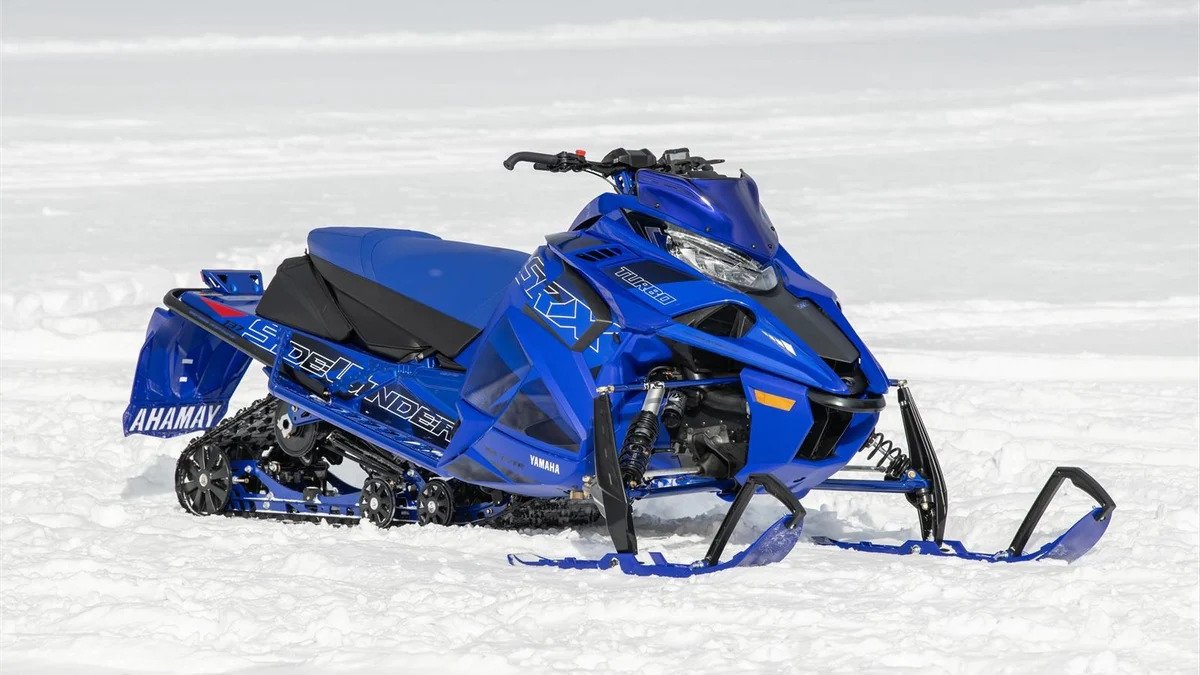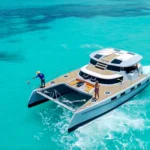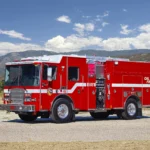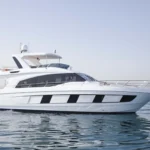
Snowmobiles were invented in 1924 by Canadian Joseph-Armand Bombardier. He came up with the idea after seeing people struggle to get around in the snowy rural areas of Quebec. Bombardier was only 15 years old at the time, and he spent years refining his design before releasing the first snowmobile to the public in 1935. The original snowmobile was called the B7, and it was intended for use by doctors to reach patients in remote areas during the winter months.
The first snowmobile was called the B7 and was intended for use by doctors to travel through snowy rural areas. It was a single-seat vehicle with a flat windshield and a rear-mounted propeller for propulsion. The B7 was not very successful commercially, but Bombardier continued to develop his snowmobiles, and by the 1950s, they were being used by a variety of industries, including forestry and mining. The popularity of snowmobiles exploded in the 1960s, and they became a popular form of recreation as well as transportation.
Snowmobiles are also known as “sleds” or “snow machines.” The term “snowmobile” is the most common in North America, while “sled” is used in some parts of Europe and Asia. In Russia, they are known as “burans,” which means “blizzard.” Snowmobiles have different names in different languages; for example, in French, they are called “motoneiges,” which means “snow motorcycles.”
Snowmobiles have tracks instead of wheels, which allows them to move easily through snow. The tracks are made of rubber or a combination of rubber and metal, and they can be studded for better traction on icy surfaces. The tracks are driven by a system of gears and chains, which are connected to the engine. The tracks also have a suspension system, which helps to absorb bumps and keep the vehicle stable.
Modern snowmobiles can reach speeds of over 150 km/h (93 mph). This is due to improvements in engine technology, aerodynamics, and suspension systems. The fastest snowmobiles are used in racing, and they can reach speeds of over 300 km/h (186 mph). However, most recreational snowmobiles have a top speed of around 120 km/h (75 mph), which is still faster than most cars can legally travel on highways.
The fastest recorded speed on a snowmobile is 332 km/h (206 mph). This record was set in 2011 by Canadian snowmobile racer Sebastien Toutant. He achieved this speed on a specially modified snowmobile on a frozen lake in Quebec. This speed is faster than the takeoff speed of many commercial airplanes.
Snowmobiles are popular in places with lots of snow, such as Canada, Alaska, and the Nordic countries. They are also used in other parts of the world where snow is less common but still present during the winter months, such as Russia and parts of the United States. In some areas, snowmobiles are the primary form of transportation during the winter, and people use them to commute to work, school, and other activities.
Snowmobiles are often used for recreational purposes, such as snowmobiling, snowcross, and freestyle. Snowmobiling is the most common form of snowmobile recreation and involves riding on groomed trails in the countryside. Snowcross is a type of racing that takes place on a closed course with jumps and obstacles, while freestyle involves performing tricks and stunts on a specially designed course.
Snowmobiles are also used for transportation in remote areas, such as national parks, where roads may be inaccessible during the winter months. Park rangers and other personnel use snowmobiles to patrol the park and perform maintenance tasks. Search and rescue teams also use snowmobiles to reach people in need of help in remote areas. In some cases, snowmobiles are used to transport goods and supplies to remote communities that are cut off from the rest of the world during the winter.
Snowmobiles have evolved significantly since their invention in the 1920s. Modern snowmobiles have a wide range of features, including heated handgrips, electric starters, reverse gear, and GPS navigation. Some models also have Bluetooth connectivity, allowing riders to listen to music or take phone calls while riding.
Snowmobiles can be dangerous if not used properly. Riders can be injured or killed if they collide with trees, rocks, or other obstacles. It is important to wear a helmet and other protective gear when riding a snowmobile. Riders should also be aware of their surroundings and ride at a safe speed.
Snowmobiles have a significant impact on the environment. The noise and exhaust emissions can disturb wildlife and damage fragile ecosystems. In some areas, snowmobiling is restricted or prohibited to protect the environment.
Snowmobiles have been featured in popular culture, including movies, television shows, and video games. One of the most famous snowmobile scenes in movie history is from the James Bond film “Die Another Day,” in which Bond uses a snowmobile to escape from pursuers in the Arctic.
Snowmobiles have been used for military purposes, particularly in cold weather regions. They have been used by the military for transportation, reconnaissance, and rescue missions. The United States military has used snowmobiles in Alaska and other areas with harsh winter climates.
Snowmobiles have set several world records over the years. In addition to the speed record mentioned earlier, snowmobiles have set records for distance traveled, altitude reached, and longest continuous ride.
Snowmobiles have inspired other vehicles, such as the personal watercraft (PWC). The PWC was invented in the 1960s by a snowmobile enthusiast who wanted a vehicle that could be used on water like a snowmobile could be used on snow.
Snowmobile racing is a popular sport, with several different disciplines, including cross-country racing, snocross, and hillclimb. Snowmobile racers compete in national and international competitions, and some races have large cash prizes.
The snowmobile industry is a significant contributor to the economy in countries where snowmobiling is popular. Snowmobile manufacturers, dealerships, and repair shops employ thousands of people and generate billions of dollars in revenue each year.
There are several snowmobile museums around the world that showcase the history and evolution of the snowmobile. The most famous of these is the Snowmobile Hall of Fame in St. Germain, Wisconsin, which features a collection of vintage snowmobiles and artifacts from the early days of the sport.
Snowmobiles have been used to set several world records for charity. In 2017, a group of snowmobilers in Minnesota set a new world record for the longest snowmobile parade, with over 1,000 participants. The event raised money for a local charity that helps families in need.
Snowmobiles have been used in scientific research, particularly in polar regions. Researchers use snowmobiles to travel across the ice and snow to study glaciers, wildlife, and climate change. Snowmobiles have also been used to transport equipment and supplies to research stations in remote areas.
Snowmobiles have been used in several famous expeditions, including the first successful journey to the South Pole by Roald Amundsen in 1911. Amundsen and his team used sledges pulled by dogs and snowmobiles to cover the nearly 1,500-mile journey from their base camp to the South Pole and back.
Snowmobiles have been used for recreational purposes for decades, with enthusiasts riding them for fun and adventure in snowy landscapes. Snowmobiling can be a great way to explore the outdoors and experience the beauty of winter. Many people enjoy snowmobiling as a hobby or a way to spend time with family and friends.
Snowmobiles have a fascinating history and continue to play an important role in many aspects of modern life. From recreation to research, from military operations to search and rescue missions, snowmobiles are a versatile and valuable vehicle in areas with heavy snowfall and challenging winter conditions. As technology continues to evolve, we can expect even more exciting advancements in the world of snowmobiles in the years to come.









